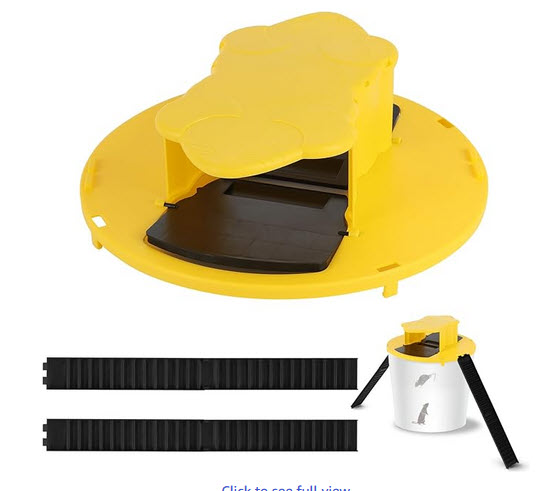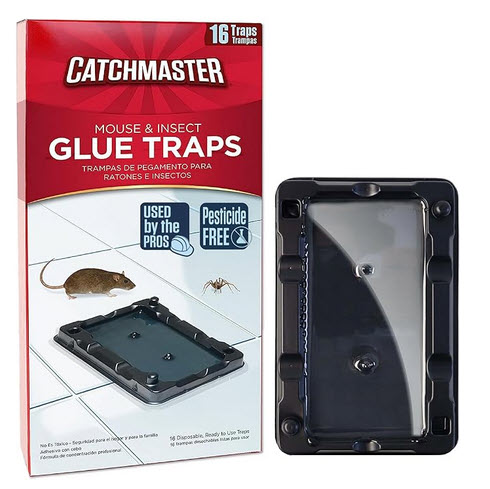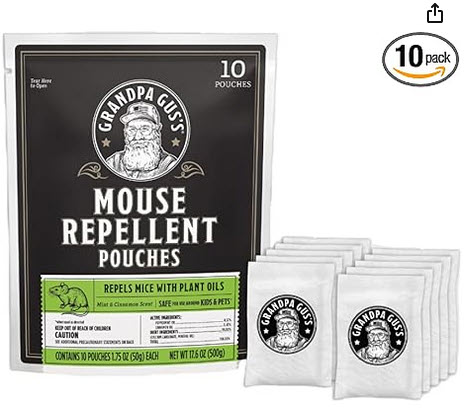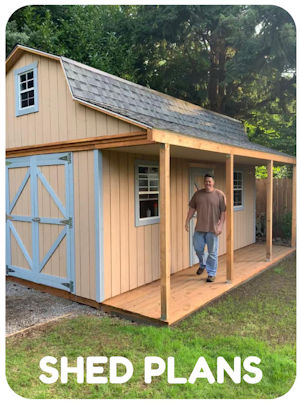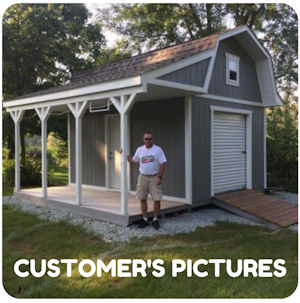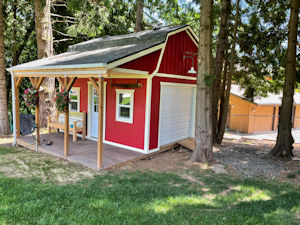Save 30% off Any Shed Plan Purchase!
Signup For My 'Shed n Sight' Newsletter
and Get Your 30% off Promo Code To Use At Checkout.
- Home
- Shed Construction
- How to get rid of mice
Do you need to get rid of mice and rats invading your shed space? Here's how
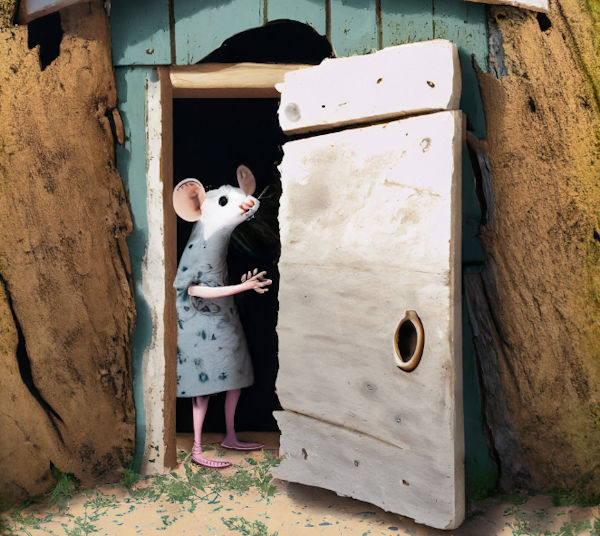 Are Nasty Mice Taking Over Your Shed?
Are Nasty Mice Taking Over Your Shed?A shed inherently is a potential paradise for mice. The secluded, undisturbed nature of a garden shed or storage shed makes it an ideal ground for a mouse problem. If you've noticed signs of a mouse infestation, such as mouse droppings, small holes, or even electrical wires suffering some suspected gnawing damage, it's crucial to take action fast.
Mice droppings can carry dangerous diseases, and the structural property damage can be hefty if not prevented in the first place. Some how they have gained easy access into your shed!
The smell is dreadful!
After a period of time, especially in the winter or colder months, you may not be in your shed that much. I remember going into my wife's garden shed sometime in February a few years back. I'll never forget the smell. It wasn't the familiar smell I was used to. It was a pungent smell. A nasty stale smell.
After looking around, I noticed a big hole in the shed floor just as you come in the shed doors. Not a huge hole, but about 4" in diameter. It was from a rat chewing his way into the shed! I couldn't believe my eyes! Mice wouldn't make such a big hole so I knew it had to be rats.
I built my wife's garden shed floor using 3/4" plywood and looking at this nasty hole, I couldn't believe a rat could chew through it! But he did. After inspecting the rest of the floor, there was another spot they chewed through. There was another hole in the toe kick of a cabinet I had installed for storage!
So the little bastards chewed through the floor behind the cabinet, then chewed through the cabinet front to gain access into the shed! What they were wanting to get to was the chicken food we had stored in the shed. I also noticed holes in the feed bags!
So I knew I had to take care of this problem but wasn't sure how. What I decided to do was to set up rat traps. I also bought some rat pellets. I dropped the pellets into the holes where the rats had chewed through the floor. I did this for about 2 weeks. I had also in the two week period caught several rats with the rat traps. And boy they were huge rats! I could see how they were able to chew through the 3/4" plywood because they were so big!
After the two weeks had passed, I got my tools out. I took my speed square and marked off some lines around the holes in the floor so that I had a square hole I could make with my jigsaw. I cut the plywood out, and now had square holes. I measured the sizes of the holes, cut plywood to fit, screwed 2x4 piece of wood to the underside, and then glued and screwed the replacement plywood pieces into the holes.
I haven't had any problems since with rats as I have tried to make a habit of keeping the rat pellets available under the shed. I throw them under there in various spots. I also got a thick plastic container to store the chicken feed in.
The mice - well that seems to be an ongoing problem but not really too bad.
The one thing I like to use is a bucket trap. It's a set up with water inside the bucket, and a little ladder going up to the top of the bucket. On top of the bucket is a lid with a hole in it and like a pivoting walk board. On the end of the walk board I place a small amount of peanut butter and this attracts the mice. They walk across the pivoting walk board to get the peanut butter and there weight makes the walk board drop them into the water below!
If you are interested in checking out this bucket trap, I have a link below.
I like using these bucket traps in my wife's garden shed to catch mice with
(If you click on the link to amazon to the right and buy the product, I will make a small commission. This does not affect the price you will pay)
Identifying pesky mice in your shed
It is easy to identify common intruders like the house mouse, deer mice, Norway rats, and the common field mouse. While there are apparent differences, they all possess the ability to squeeze through a hole the size of a dime due to their poor eyesight and preference for exploring through touch. Monitoring such potential entry points inside and around your shed is the first thing you should do upon identifying a rodent problem.
How dangerous are mice and other rodents?
Mice and other rodents pose several significant risks to both health and property.
Health risks: The main danger mice and other rodents pose is through the transmission of diseases. These can be spread through their bites, their droppings and urine, or through the fleas and mites they may carry. Diseases rodents can carry include Hantavirus, salmonella, rat-bite fever, and the plague, among others.
Property damage: Mice and rodents are notorious for gnawing on materials to file down their growing teeth. This can result in damage to furniture, walls, wiring, and pipes. They may also build nests in walls or other parts of the building causing further destruction.
Food contamination: Mice and rodents are omnivorous and will eat just about anything – this includes food stored in homes. When they get into a food source, they can contaminate it with their droppings, urine, and fur. This could lead to foodborne illnesses.
Invasion of personal space: Mice and other rodents are known to invade homes, especially during colder months when they're looking for warmth and food. This invasion can cause fear and discomfort, and if they die in hidden places, it can lead to unpleasant smell.
In short, while mice and other rodents may look unthreatening, their presence poses significant health risks and potential damage to property if not managed properly. If you suspect a rodent infestation, it is important to act quickly and consult with a pest control professional to mitigate potential harm.
Why would mice want to go into your shed?
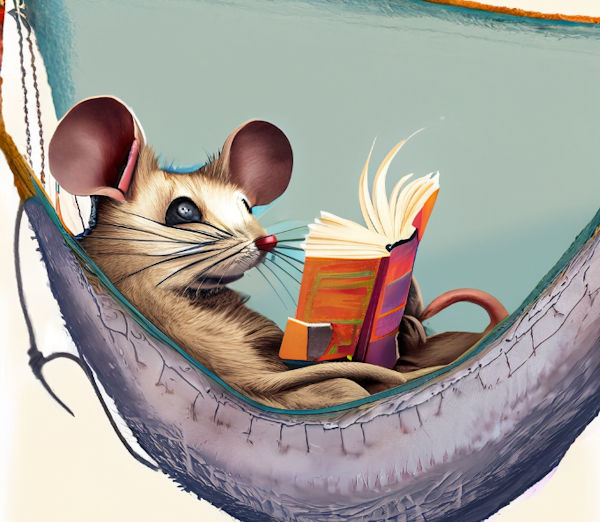 Do Mice Have It Easy In Your Shed?
Do Mice Have It Easy In Your Shed?Mice and other rodents might choose to live in a shed for several reasons:
Shelter: Sheds often provide the perfect shelter for mice and other rodents. They are typically undisturbed spaces, providing a safe and secure habitat away from predators.
Warmth: In colder weather, mice and rodents will seek out warm places to live and breed. Sheds, especially if they contain items like garden equipment, boxes, or other storage items, can provide a warm environment.
Food sources: If a shed is used to store items like birdseed, pet food, or gardening supplies (such as bulbs and seeds), it can provide an abundant food source for mice and rodents. Even small crumbs or food waste can attract these pests.
Nesting materials: Sheds often contain a multitude of materials that are perfect for mice and rodents to build nests. Cardboard boxes, rags, old newspapers, straw, and even gardening gloves can all be chewed up and used to create a cozy nest.
Seclusion: Because people typically don't spend a lot of time in their sheds, mice and rodents can go about their business largely undisturbed. This seclusion and lack of human activity make sheds a very attractive home for these creatures.
Ease of access: Particularly in older, wooden sheds, mice and rodents can easily gnaw small holes to gain access to the inside. Even a tiny hole or crack can provide an entry point for these pests.
Considering these factors, it's not surprising that a shed can be a popular choice of residence for mice and other rodents. If you have a shed and are worried about potential infestation, it's a good idea to ensure all food is securely stored, holes and cracks are sealed, and to regularly check for signs of rodent activity.
Eliminate those pesky mice: Here's how
Several effective pest control methods can destroy a mice infestation. Among the types of traps available are humane traps, glue traps, sticky traps, bait stations, snap traps, and even a homemade bucket trap. Evidence suggests that peanut butter, pet food, and deer mice’s preference, grass seed, work best as bait. However, these traps should be set up near possible entry points or places with evidence like rat droppings or little holes.
Mouse poison and poison bait are also effective but should be used with caution, especially if there are kids or household pets. Always place in airtight containers or plastic containers that are inaccessible to non-target animals. Rodent control services or professional exterminators can be called upon when the mouse problem is rampant, offering the best results in such cases.
Glue boards are one of my favorite methods of trapping mice!
(If you click on the link to amazon to the right and buy the product, I will make a small commission. This does not affect the price you will pay)
Prevention Tactics
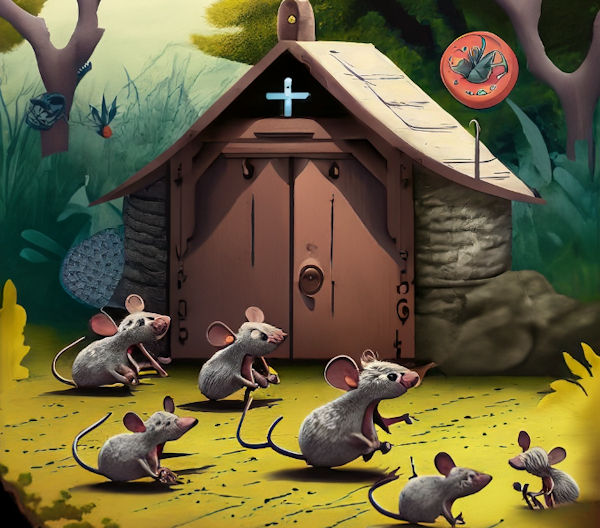 Prevent Those Nasty Mice and Rodents From Living In Your Shed!
Prevent Those Nasty Mice and Rodents From Living In Your Shed!Preventative measures are, in most cases, a good idea to ensure that the mice infestation does not recur. One of the best ways is to seal all small holes or potential entry points. Use steel wool, wire mesh, or even plastic containers to block their paths and restrict their movement.
Another approach is to limit their access to food sources. Any food items, animal feed, human food, or even grass seed should be stored in airtight containers. Pet food left out unattended can also attract pesky mice.
Lastly, consider rearranging your shed. Cardboard boxes can prove an easy target for mice since they can chew through these to make homes. Opt instead for plastic containers and ensure you keep the area clean.
Mouse repellents
Both electronic repellents and natural repellents can prove handy in combating a mouse problem. Studies suggest that these repellents function by producing sound waves that are intolerable for mice.
Natural repellents, such as essential oils, are also a good idea. Mice detest the smell of peppermint oil, cinnamon oil, and cayenne pepper, making them useful prevention methods. Sprinkle or spray these around the shed, focusing specifically on potential entry points.
I like this one a lot and it's available on Amazon:
( If you decide to buy the product listed below on amazon I will make a small commission, but it will not affect the price you pay)
Using a professional exterminator if all else fails
Eliminating mice from your garden shed can initially seem daunting, but by breaking the process down into identification, elimination, prevention and repellency stages, it becomes more manageable. Prioritizing preventative measures will save you from damage and potential health risks in the long run.
However, if the mice problem persists despite enforcing these methods, it is advisable to consult professional exterminators or rodent control services. Their expertise paired with tailored solution packages ensures effective rodent eviction while maintaining the safe usage of potentially harmful substances like mouse poison and bleach solution.
This comprehensive guide aims to equip you with what you need to know to combat a mice infestation issue. Effectively using these methods can help you maintain a clean, damage-free, and mouse-proof shed while mitigating the risk of dangerous diseases.
Monthly DIY
Shed-in-sight
Newsletter
Subscribing will get you discounts on shed plans, monthly updates, new shed design ideas, tips, exclusive discounts on shed building resources and tools. Learn more here.
Recent Articles
-
12x16 Gable Storage Shed Plans with Roll Up Shed Door
Jan 10, 26 12:09 PM
12x16 gable storage shed plan with roll up shed door and side entry door. Your download: detailed blueprints, building guide, matererials list, and email support. -
Barn Shed Plans with Big Lofts
Dec 20, 25 08:03 AM
My barn shed plans come with full email support, detailed building guides, materials lists, and they are cheap too! -
Pictures of Sheds Built By Shedking Customers
Dec 07, 25 07:39 AM
Visit our library of pictures of sheds built from our shed plans. Get great shed design ideas and plans for storage sheds, garden sheds and more.
My You Tube Videos
